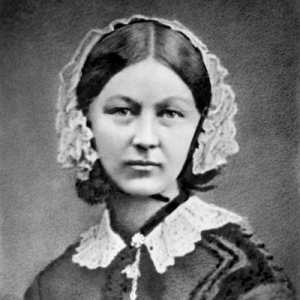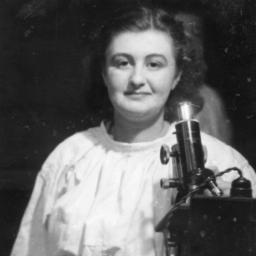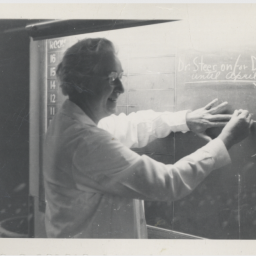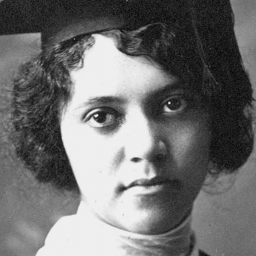Florence Nightingale

Often called “the Lady with the Lamp,” Florence Nightingale was a caring nurse and a leader. In addition to writing over 150 books, pamphlets and reports on health-related issues, she is also credited with creating one of the first versions of the pie chart. However, she is mostly known for making hospitals a cleaner and safer place to be.
Florence Nightingale was born on May 12, 1820, in Florence, Italy. Although her parents were from England, she was born in Italy while they were traveling. Both Florence and her older sister Parthenope were named after the Italian cities where they were born. When they returned to England in 1821, the Nightingale family lived in two homes. They had a summer home in Derbyshire called Lea Hurst, and a winter home in Hampshire called Embley. Growing up in a wealthy family, Florence Nightingale was homeschooled by her father and expected to get married at a young age. However, when she was a teenager, Nightingale believed she received a “calling” from God to help the poor and the sick.
Even though it was not a respected profession at the time, Nightingale told her parents that she wanted to become a nurse. Her parents did not approve of her decision and wanted her to get married and raise a family. Nightingale still wanted to be a nurse and refused marriage. Eventually, her father allowed her to go to Germany for three months to study at Pastor Theodore Fliedner’s hospital and school for Lutheran Deaconesses. After finishing her program in Germany, Nightingale went to Paris for extra training with the Sisters of Mercy. By the time she was 33, Nightingale was already making a name for herself in the nursing community. She returned to England in 1853 and became the superintendent and manager of a hospital for “gentlewomen” in London.
When the Crimean War began in 1854, the British were unprepared to deal with the number of sick and injured soldiers. The lack of medical supplies, overcrowding, and unsanitary conditions caused many people to complain. Newspapers began to report about the terrible state of medical care. The Secretary of War, Sidney Herbert asked Nightingale to manage a group of nurses that would go treat the wounded soldiers. She agreed, and on November 4, 1854, Nightingale and 38 nurses arrived at the British camp outside of Constantinople. When they got there, the doctors were unwelcoming because they did not want to work with female nurses. However, as the number of patients increased, the doctors needed their help. The nurses brought supplies, nutritious food, cleanliness, and sanitation to the military hospital. They also provided individual care and support. Nightingale was known for carrying a lamp and checking on the soldiers at night, so they gave her the nickname “the Lady with the Lamp.” Within six months, Nightingale and her team transformed the hospital. The death rate went down from 40 percent to 2 percent because of their work.
When Nightingale returned from the war, she continued to improve the conditions of hospitals. She presented her experiences and her data to Queen Victoria and Prince Albert in 1856. This data was the reason they formed a Royal Commission to improve the health of the British Army. Nightingale was so skilled with data and numbers that in 1858 she was also elected as the first woman member of the Royal Statistical Society. In 1859, Nightingale continued to spread her healthier medical practices by helping to set up the Army Medical College in Chatham. That same year, she published a book called Notes on Nursing: What it is, and What it is Not. Her book gives advice on good patient care and safe hospital environments. As a result of her efforts during the war, a fund was set up for Nightingale to continue teaching nurses in England. In 1860, the Nightingale Training School at St. Thomas’ Hospital was officially opened. In her later years, Nightingale was often bedridden from illness. However, she continued to advocate for safe nursing practices until her death.
Although Florence Nightingale died on August 13th, 1910 at the age of 90, her legacy continues. Two years after her death, the International Committee of the Red Cross created the Florence Nightingale Medal, that is given to excellent nurses every two years. Also, International Nurses Day has been celebrated on her birthday since 1965. In May of 2010, the Florence Nightingale Museum at St. Thomas’ Hospital in London reopened to honor the hundredth anniversary of Nightingale’s death.
Fee, Elizabeth, and Mary E Garofalo. “Florence Nightingale and the Crimean War.” American journal of public health vol. 100, no. 9 (2010): 1591. doi:10.2105/AJPH.2009.188607
Reynolds-Finley Historical Library. “The Life of Florence Nightingale.” The University of Alabama at Birmingham. Accessed May 1, 2018. https://library.uab.edu/locations/reynolds/collections/florence-nightingale/life
The Florence Nightingale Museum. “Florence Nightingale Biography.” Accessed May 3, 2018. https://www.florence-nightingale.co.uk/resources/biography/?v=7516fd43adaa.
The National Archives. “Florence Nightingale.” September 05, 2018. http://www.nationalarchives.gov.uk/education/resources/florence-nightingale/.
Photograph:
http://www.nationalarchives.gov.uk/wp-content/uploads/2014/03/COPY_1_11_34_1866-e1402062188591.jpg
MLA - Alexander, Kerri Lee. “Florence Nightingale." National Women's History Museum. National Women's History Museum, 2019. Date accessed.
Chicago - Alexander, Kerri Lee. "Florence Nightingale." National Women's History Museum. 2019. www.womenshistory.org/education-resources/biographies/florence-nightingale.
National Geographic Kids. “Florence Nightingale Facts for Kids.” April 26, 2018. https://www.natgeokids.com/za/discover/history/general-history/florence-nightingale/.




